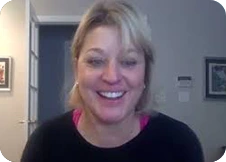As of the November 2023 mortgage rates, the total interest you pay on a 15-year mortgage is $2,674.82. With mortgage curtailment, you can save huge on the overall interest on your loan.
Mortgage curtailment means making extra payments to pay off a mortgage early. It helps buyers save thousands of dollars in interest payments, as it quickens the loan repayment process and reduces its duration.
4 Benefits of Mortgage Curtailment
- Mortgage curtailment can potentially save you a significant amount of money in interest payments.
- With curtailment, you can shorten the overall term of your mortgage.
- Based on the mortgage agreement, a curtailment plan can reduce your monthly mortgage payments. This frees up cash and provides more financial flexibility.
- Curtailment payments speed up the growth of your equity in the property. As you decrease the mortgage balance, your ownership stake in the home increases.
How Does a Mortgage Curtailment Work?
To understand how mortgage curtailment works, let’s look at two hypothetical situations:
1st Situation: Regular payments on a 30-year mortgage of $200,000 with an interest rate of 4%.
2nd Situation: Mortgage curtailment on a 30-year mortgage of $200,000 with an interest rate of 4%.
| Regular Payments | Mortgage Curtailment | |
| 1 | It will take you 30 years to completely pay off the mortgage. | Say you make an extra payment of $200 towards the principal every month. This is on top of the monthly $955 payment. |
| 2 | By the end of the loan term, you would have paid a total of $343,739. | With this extra payment, you would pay off the mortgage in 22 years instead of 30. |
| 3 | $143,739 of the total amount you pay would go into interest. | You would save around $37,000 in interest over the life of the loan. |
- 📌Important: Some lenders allow borrowers to make curtailment payments at any time. Whereas, some allow it within certain timeframes. It’s important to check with your lender to see what options are available to you.
Types of Curtailment
There are two types of mortgage curtailments:
- Partial Curtailment: Instead of paying the entire mortgage balance at once, you make partial payments to lower the principal amount. This strategy allows you to decrease the amount you owe and save on interest.
- Full Curtailment: Here, you make a full payment of your debt balance at once. This process allows you to become mortgage-free and own your property outright.
- 📌Important: You must review your mortgage agreement and consult your lender. Also, ensure there are no prepayment penalties or any other fees associated with early repayment.
Is Mortgage Curtailment Worth It?
There are various benefits of mortgage curtailment. However, you must consider your financial situation and approach your lender before you choose to curtail your mortgage.
You must consider these factors:
- Financial Situation: You must ensure that you have enough funds to make curtailment payments. Prioritize high-interest debts and create an emergency fund before you curtail your home loan.
- Interest Rate: A curtailment is a good option when your loan has high interest rates. By reducing the principal amount you can also reduce the interest rate charges.
- Prepayment Penalties: Check the mortgage agreement for any prepayment penalties. Note that some lenders impose a fee for paying off the mortgage early.
Find Homes for Sale Under Your Specific Budget
Bottom Line
Mortgage curtailment helps you save on interest and pay off the loan sooner. Apart from this, it also grows your home equity faster. Homeowners who can afford to make extra payments and have a stable financial situation should opt for curtailment.
Furthermore, if you are a new homebuyer, it’s important to get familiar with mortgage terms like down payments, amortization, etc. To start your home search you can browse properties online.
Find Your New Home With Houzeo
With thousands of properties online. Houzeo.com is one of the biggest property listing sites in the US. Find condos, townhouses, co-ops, and other types of homes for sale on Houzeo.
» Need More Clarity? Read these exclusive Houzeo reviews and learn why the platform is the best in America’s competitive housing market.
Frequently Asked Questions
What does posted to curtailment mean?
Post to curtailment means that a curtailment payment has been received and applied to the principal balance of the mortgage.
What is the difference between mortgage curtailment and prepayment?
Mortgage curtailment involves additional payments directly applied to the principal balance. Prepayment refers to various methods of making extra payments that can be used to reduce principal or to prepay future interest.
Do lenders allow partial curtailments?
Yes, lenders allow partial curtailments at any point of the loan repayment process.




















.webp)
